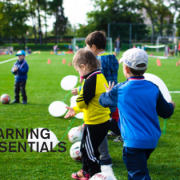The Significance of Struggling
In honor of International Mountain Day on December 11th, designated by the United Nations General Assembly, it is time to take a look at mountains in the metaphorical sense. The holiday itself is meant to look closely at sustaining the food and water supplied by mountain regions. However, classrooms are chock-full of mountains as well—challenges presented in an effort to garner grit, perseverance, and problem-solving. As much as our students may prefer to resist or bypass struggles, it becomes our obligation as educators to provide the very obstacles that students would rather avoid. The point is not to frustrate or deter a sense of success—quite the opposite, rather. Skills are best acquired when learners are presented with increased difficulty and complexity. The struggles—or mountains, if you will—teach our students innumerable life lessons about how to be successful learners.
Lesson 1: Struggles teach young people about the real world.
One difficult aspect of education is the microcosm effect—as much as we educators present real-world problems, realistic scenarios, and connections to our students’ lives as much as possible, what we do in the classroom is merely practice. Thus, we must be sure to provide practice that is rigorous, unfamiliar, and exceptionally difficult at times. By creating opportunities for students to encounter advanced material, we also prepare them for life lessons in the real world. College and adulthood can prove to be a rude awakening for many students. Beyond the difficulty with transitioning, it can often be the first time in young people’s lives that they have to rely solely on themselves. Providing students with the opportunity to practice perseverance before heading into the real world of adulthood allows them time to live and learn—to make mistakes before the serious consequences come into effect. The greatest lesson to be learned from falling down is how to pick yourself back up.
Lesson 2: Struggles allow students to see what they’re really made of.
Avoiding difficult tasks and challenges is a sure way to evade failure and mistakes. However, by circumventing the struggles, students also forfeit the opportunity to push themselves to a greater potential. The adage, “nothing worth having is easy” applies here. Battling through an unusually difficult task teaches students to muster up their own greatness—that no matter how tricky something might be, pure grit and the desire to achieve can overcome even the most formidable opponents or challenges.
Lesson 3: Struggles prompt creative thinking.
Consider this: students in our classrooms today are challenged with tasks involving problem-solving and critical thinking skills. If the “problems” that we place in front of students are elementary or mundane, how can we expect to cultivate the creative thinkers of the future? Much like the beliefs behind Socratic methods and principles, we must present students with opportunities to investigate, question, and analyze real-world problems for which even we, as educators, do not have all of the answers. By creating authentically difficult challenges, we are prompting students to think outside of the box—try something that no one else has considered. It may fail, but with that failure comes a slew of lessons and strategies to employ for the next attempt.









